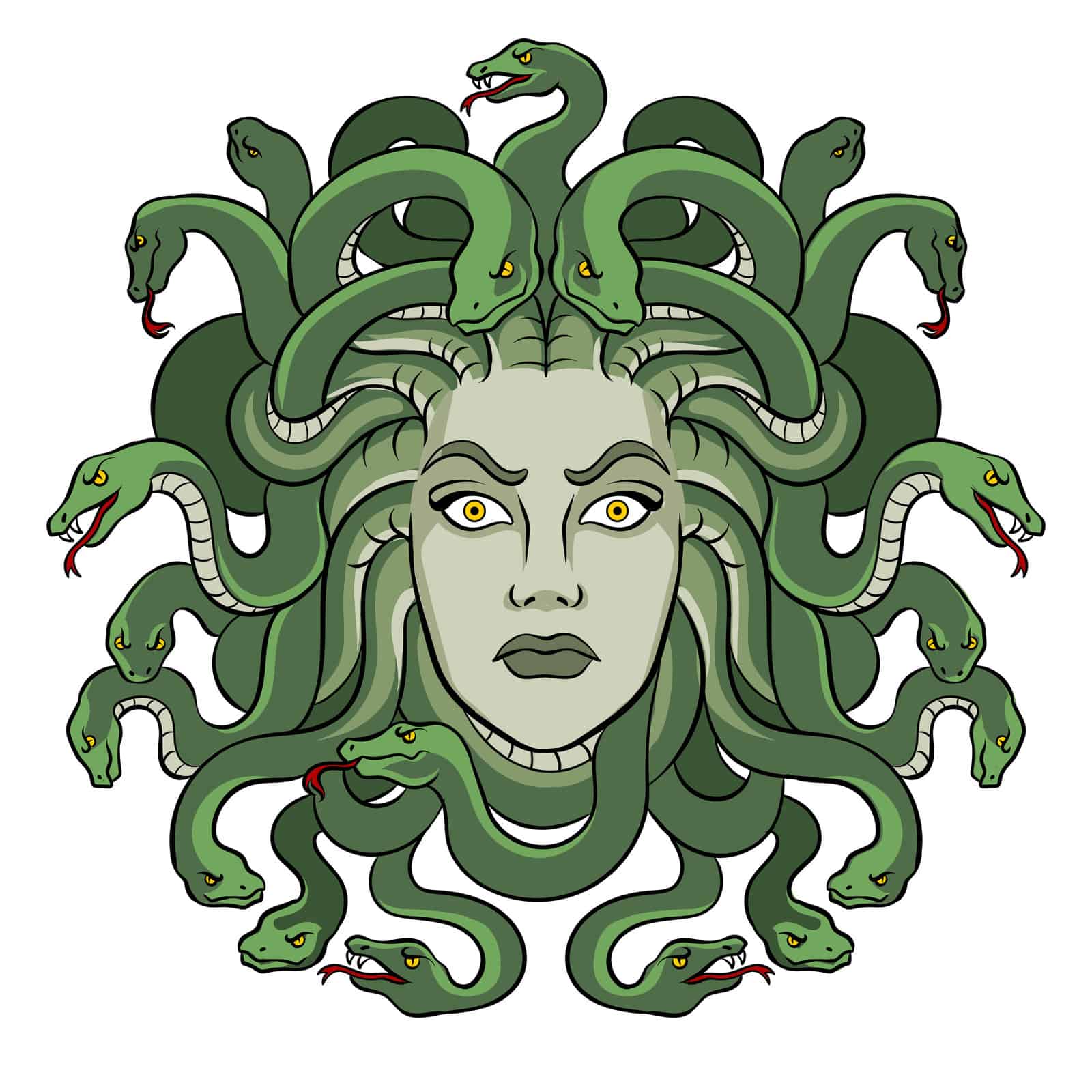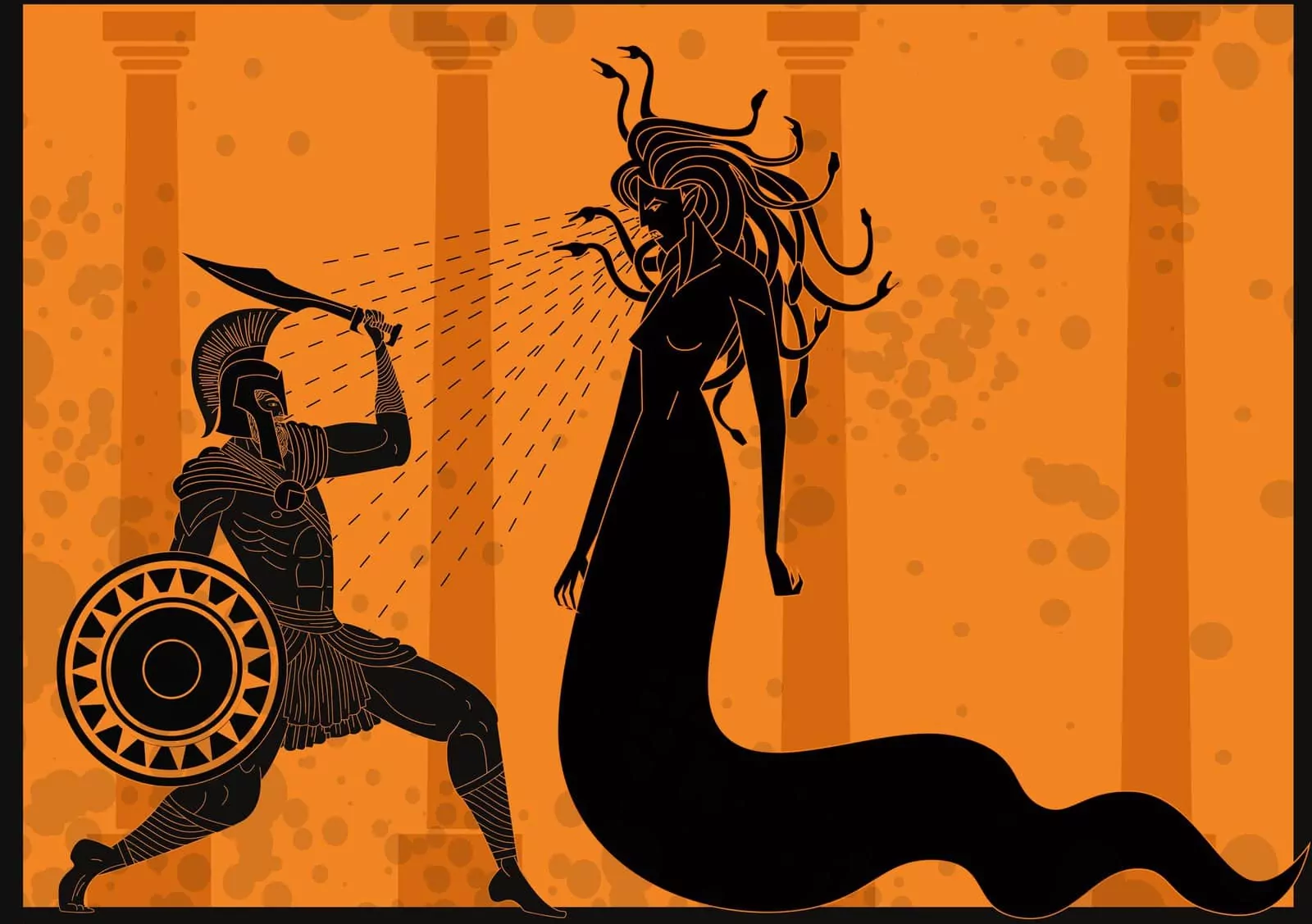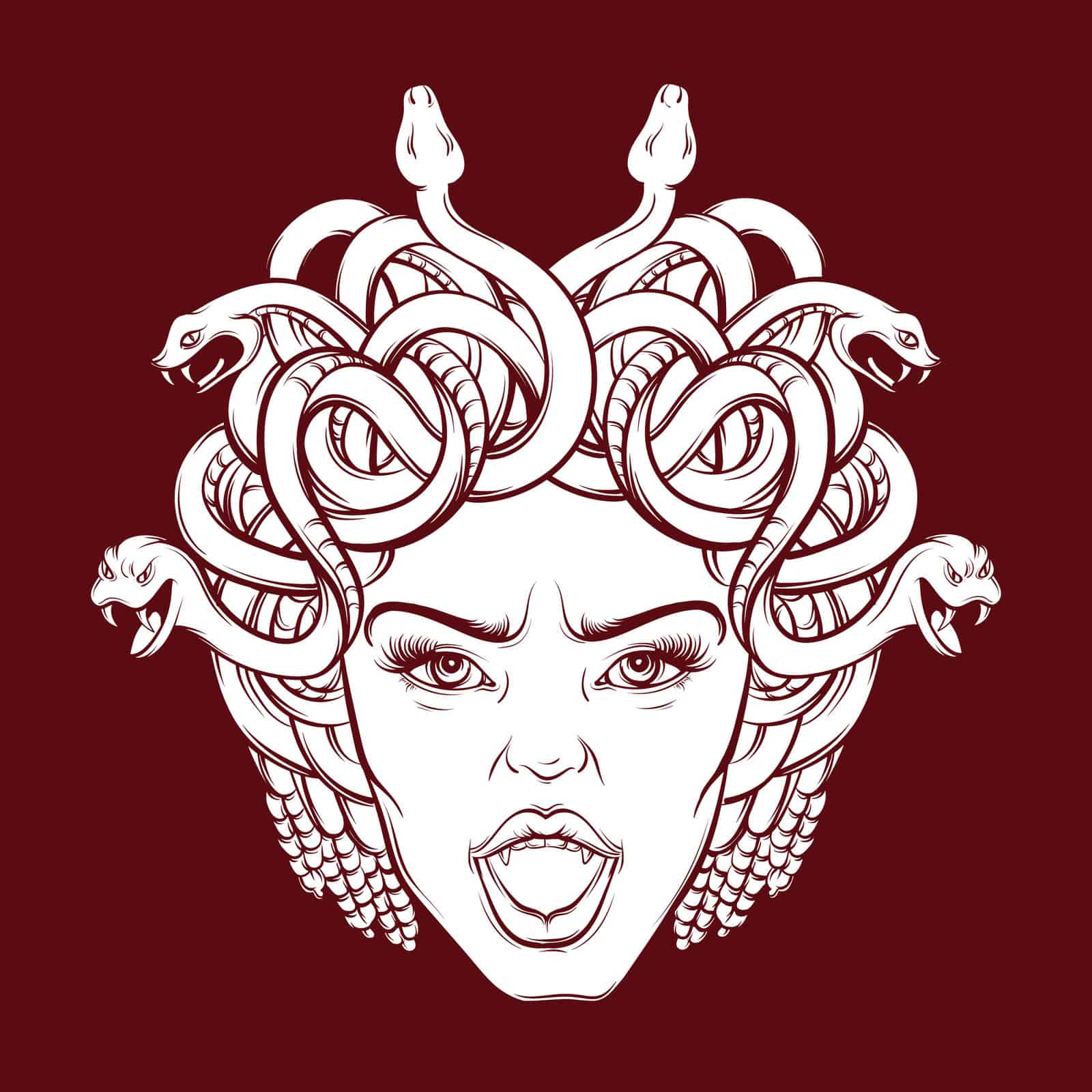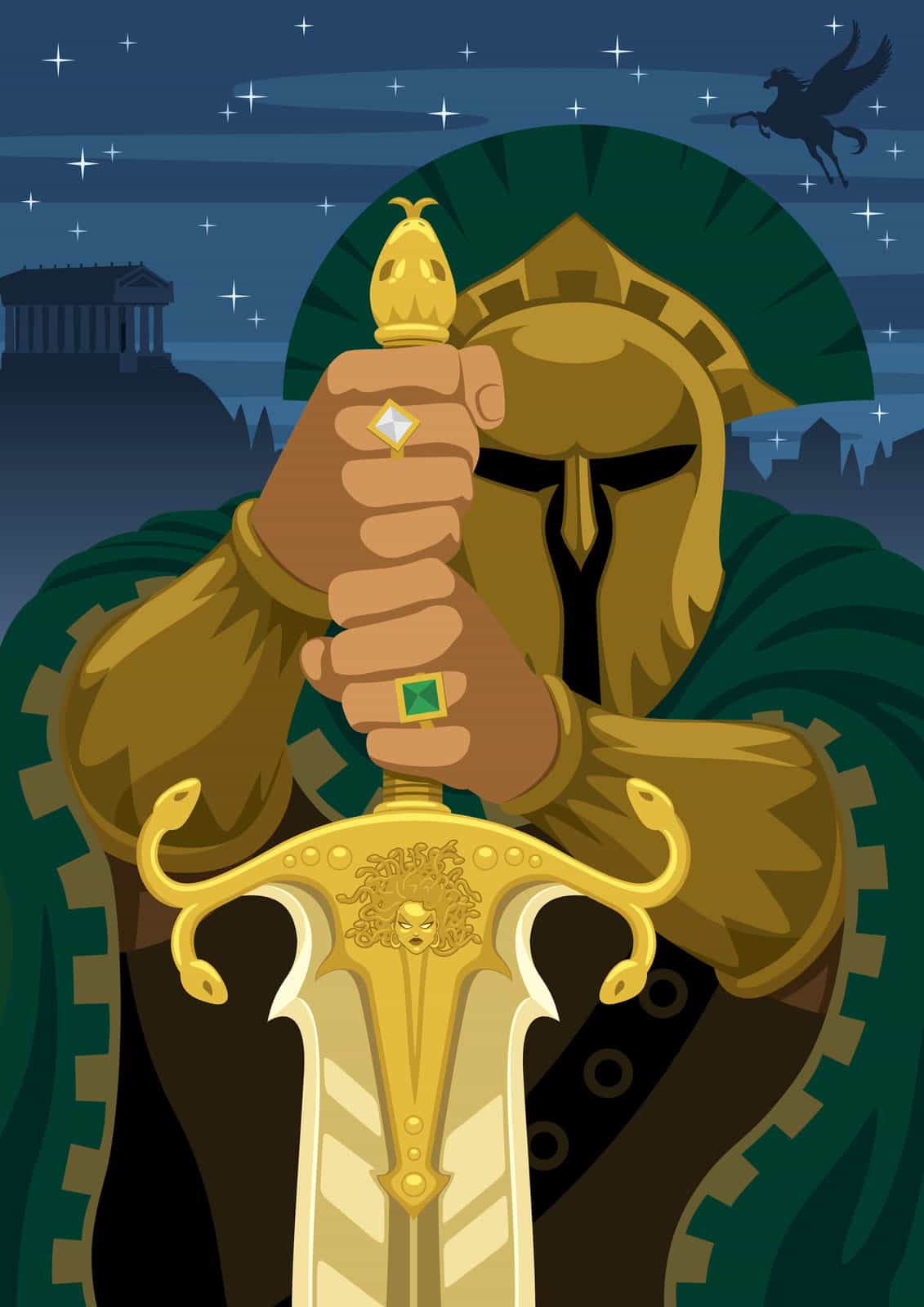
Medusa, 4 Amazing Facts of Greek Mythology
Medusa is a figure from ancient Greek art that is easy to recognise.
The kind daughter of Phorcys and Ceto, who was the first thing in the world. Born to be very beautiful. Even though she was graceful and beautiful, she swore to stay pure and became Goddess Athena’s priestess by meeting the requirements of being a virgin and having a pure soul.
Something else has been chosen by fate.
People began going to the temple only to see Medusa. Athena became envious of how much Medusa was being praised for her beauty. She slowly started to dislike her. So that she can steal Medusa’s beauty, she thinks about what one mistake she could make.
Madusa is considered a victim
Poseidon, the Greek sea god, fell in love with Medusa and wanted to marry her. The oath keeps making Medusa say no.
Poseidon then slept with her in front of Athena’s temple.
Medusa broke the oath, so Athena cursed her instead of Poseidon.
Athena changed Medusa’s hair and lower body into snakes, and anyone looking into her eyes turned to stone.
The most beautiful woman became a monster in no time.
Now, everyone wants to cut off Medusa’s head to defeat her. Perseus was told by King Polydectes to go after Medusa. Athena blessed the shield he used, Hades blessed the helmet he wore, and Zeus blessed the sword he used.
With the helmet, he can go away.
Medusa can only be seen through the shield, and the sharp sword can cut her into pieces. Medusa’s face, whether scary and grotesque or pretty and calm, shows up in almost all media in different ways.
People’s view of Madusa
Most people think that Medusa is an apotropaic symbol that protects against and wards off bad things like the evil eye we use today.
She is a dangerous threat meant to scare away other dangerous threats. She is an image of evil that is meant to scare away evil.
Looking closely at her role in Greek mythology and art, you can see that she is a nuanced and complex character with many different forms and meanings.
Medusa is most famous for having snakes for hair and for being able to turn anyone she looked at into stone. Homer, Hesiod, a poet from the eighth century B.C., and Pindar, a lyric poet from the fifth century B.C., are just a few of the ancient writers who wrote about the mythical creature.
These works give a wide and varied picture of the creature. Hesiod’s Theogony says she was one of three Gorgon sisters born to Keto and Phorkys, the first sea gods. Stheno and Euryale were immortal, but Medusa was mortal.
The most famous story about her is about how she met the Greek hero Perseus. A king with no honour told him to bring him the head of Medusa, which was impossible. Perseus went on his journey with the help of the gods, who gave him tools from heaven.
While the Gorgons were sleeping, the hero attacked. He used Athena’s shiny shield to see a reflection of Medusa’s hideous face and stay away from her mesmerising gaze as he cut off her head with an adamantine sword called a harpe.
Medusa’s children, the winged horse Pegasos and the giant Chrysaor were born from her neck because of this cruel act. Perseus was being chased by two immortal sisters who were very angry, but the hero got away with his prize by using Hermes’ boots with wings and Hades’ helmet, which made him invisible.
Medusa was so powerful that not even death could stop her. Perseus had to keep her head on a basis, a unique bag that was strong enough to hold it. During his travels, he used the head to turn his enemies into stone and save Princess Andromeda from a sea monster.
He then gave the head to Athena so she could use it as her protection.
Pindar’s Twelfth Pythian Ode tells how Stheno and Euryale’s angry search for the person who killed their sister led to a new part of the Medusa story.
After hearing their cries of pain and anger, Athena was moved to make the flute sound like them.
When the goddess played the flute, she threw it away when she saw herself in the mirror. As she played, her face got bigger and uglier.
She successfully tried to imitate the gorgons’ cries but unintentionally copied their wide, scary faces. Medusa with snakes for hair becomes popular in the first century B.C. Ovid, a Roman writer, says that Poseidon wooed a beautiful young woman named Medusa in the temple of Athena.
The goddess was angry that Medusa had broken a sacred rule, so she turned her hair into snakes as a punishment.
Even though these stories sound like myths, the ancient Greeks thought they were true. Myths and the stories that Homer and Hesiod wrote down were thought to be from a time when heroes, gods, and the supernatural interacted with real people.
Stories from this time were told over and over again in poetry, prose, and art. The evidence from Greece shows that the world was full of heroes and monsters. So, in the minds of ancient people.
Medusa wasn’t just a made-up monster
She was also a part of their shared past and present. She was a historical threat, and the story of how Perseus beat her and used her power was not just a story but also a part of the Greeks’ shared historical and allegorical record.
In the same way that Medusa is shown in different ways in different myths, she is also shown in different ways in ancient art. Her appearance changes a lot over the years, but her striking frontality makes her always easy to spot.
In Greek art, it’s rare for a figure to face directly out, but Medusa does this almost always, no matter the style or medium. She stares straight ahead and makes no effort to avoid the viewer.
The gorgoneion is the name for the head and face of Medusa, which was often used as a design element.
It is a common sign of her power in architecture, painting on vases and metalwork. During the Archaic period, the gorgoneion was a familiar image on the walls of temples (ca. 700–480 B.C.).
Temple C at Selinunte in southwestern Sicily, built around 540 B.C. and had two huge gorgoneia, one on the east and one on the west, is probably the best example.
The face of Medusa was also used to decorate smaller parts of buildings. Temples in Sicily, southern Italy, and mainland Greece were decorated with many antefixes and decorative roof tile covers made of terracotta with gorgoneia.
This was especially common during the Archaic period.
During this time:
- Medusa is shown as a monster. She has a round face, wide eyes, a beard, a gaping mouth with an outstretched tongue and sharp teeth that gnash together, and her tongue is very long and protrudes from her mouth. Medusa is still a popular image in later architectural elements, but now she looks more like a woman.
- She loses the scary teeth and beard, but her wild hair and angry face are still recognisable in Classical and Hellenistic examples.
Greek vases, cups, and other terracotta items were sometimes decorated with a gorgoneion.
In some cases, it was painted on the bottom of a drinking vessel to surprise the person as he drank. Pieces from the seventh and sixth centuries B.C. have gorgoneia that are so big that they can cover the whole surface, just like antefixes today.
Many of these ceramics are round, which makes them an excellent place to show the rotund face of the Archaic Gorgon. This face is crazy, with big features that combine the feminine (curled hair and earrings) with the masculine (a horned head) (beard).
During the Hellenistic era, people kept decorating pottery with Medusa’s face (ca. 323–31 B.C.). She is the main decoration on many vases and shows up repeatedly as an ornamental motif. Like architecture, these Gorgons from the late 4th and early 3rd centuries B.C. change from grotesque to feminine, but they still have the same frontal shape.
In the fifth century B.C., a new art style began to focus on the ideal form. This new Classical style aimed for perfection and beauty, and even Medusa, a monster, had to live up to these standards.
Medusa is everywhere
- She is shown in architecture, pottery, and metalwork, among other things. Her head is often used as a decoration on the handles of bronze pots. Her round face and protective nature make her a good choice for jewellery.
- You can find her on earrings, pendants, and rings. There is also armour with the Gorgon on it. In the Iliad, Zeus’ aegis has a picture of her head.
- In Hesiod’s Shield of Herakles, the myth of Perseus and the Gorgons is shown on the hero’s shield. Most of the time, the gorgoneion is the most important part of the aegis of Athena.
- The head of Medusa is on the goddess’s chest in both vase paintings and sculptures.
The gold and ivory Athena Parthenos that once stood on the Parthenon was the most famous sculpture of Athena.
It had two gorgoneia, one on her aegis and one on her shield. The Gorgon’s face wasn’t just on divine armour, though.
It was also on Greek soldiers’ helmets, shields, and greaves. The fact that Medusa’s face is on armour makes it clear that her presence is powerful enough to protect the wearer from enemies.
The gorgoneion is not the only piece of art that shows Medusa. She also appears in scenes that show Perseus’s adventures.
In many stories, the hero runs away with Medusa’s head while her body lies nearby, sometimes with Pegasus and Chrysaor by their mother’s side (06.1070).
The central decoration of the Temple of Artemis on Corfu, which was built in the early sixth century B.C., is a huge example of this type.
However, Perseus and the beheading are missing from this picture, which is interesting.
In other scenes, the time right before the murder is shown. Perseus holds his sword to Medusa’s neck, but he doesn’t look at her as he kills her, so he doesn’t get turned to stone by her gaze. This scene is shown on a metope from Temple C at Selinunte.
Athena stands next to the hero to help him. In later pictures from the fifth century B.C., Medusa is sleeping as the hero comes up to attack her.
Here’s a rare picture of Medusa not facing forward or staring. When she’s sleeping, her power doesn’t pose a threat. She is shown as a peacefully sleeping person; only her wings make it clear that she is a supernatural being.
After Perseus kills Medusa, the other Gorgons, Stheno and Euryale, chase after him in some scenes.
One example is an amphora from Eleusis from the early seventh century B.C., which shows the two running after the hero while their sister’s body, with her head cut off, lies behind them. This running pose, called “knielauf,” is often used to show Gorgons on pottery, buildings, and relief sculptures.
Even though Medusa’s appearance changes from a hideous monster to a beautiful woman during the Archaic, Classical, and Hellenistic periods, her “otherness” stays the same. The stories about the Gorgons made them seem like horrible creatures from outside the Greek world who should be feared and eventually killed.
Ancient pictures of the Gorgon are scary and hard to understand because it looks like it could be both male and female, human and animal.
The antefixes, bronze handles, and vase decorations from the sixth century B.C. all show a creature that is both scary and unique.
In classical and Hellenistic art, Medusa looks more human, but she still has a supernatural feeling because she has wings and snakes.
Even though these later pictures don’t have the Gorgon’s gaping mouth, sharp teeth, or beard, they still have the most striking thing about it: its piercing, unblinking gaze.
Medusa’s power, which was alive and real in the minds and memories of ancient people, is based on change.
Her presence is strange, dangerous, and powerful, and so are her traits. In the Odyssey, her head was kept in Hades to keep the living from going to the world of the dead.
From the story of Perseus, we know that her face and eyes could turn men into stone. Pindar tells the story that Gorgon’s cries were both great and terrible.
Perseus and Athena had to bring these dangerous forces under control and use their power. Ancient Greek artists used this harness to show the Gorgon in all times and all kinds of art. Medusa is a dangerous and mysterious other, but she is also everywhere.
She has an undeniable energy that led artists in ancient Greece, Rome, and beyond to repeat her look and story in different ways in literature, folklore, and art.
This was all about Medusa and Greek Mythology. To learn more about other Mythology and more interesting information, keep visiting Learningmole.
If you enjoyed this content why not dive into some more historical eras – check out these articles: Vikings History, Ancient Rome, Ancient Egyptians – The First Woman Pharaoh, Native American History. Victorian Era, Ibn Khaldun or Celts
Why not subscribe for as little as £1.99 per month to access over 1000 fun educational videos!







Leave a Reply